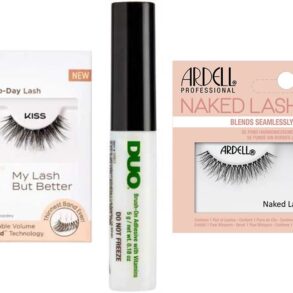Unsurprising. That was the likely initial reaction of regulatory professionals in the beauty space to the news that both Sephora and Target were being sued for misleading purchasers of their clean beauty products.
It’s not unsurprising because those retailers are ill-intentioned. It’s merely because regulation in this area has quite a significant gap that companies such as Target and Sephora can easily fall into.
Clean Beauty
Clean beauty began as a makeup trend in the 1970s and rose up alongside the clean eating movement in 1990s California. More recently, the “Goopification” of beauty has generated skyrocketing consumer interest in cosmetic products perceived as “natural”—that is, produced in a sustainable manner, composed of raw and organic ingredients, and promoting the well-being of people and the planet.
Over time, “natural” has been generally understood to describe a product that’s free from harmful chemicals, synthetic or otherwise. However, every company seems to have their own definitions regarding the use or avoidance of certain ingredients, the product’s effects on the environment, and overall sustainability. Ingredients that have become the four-letter words of the beauty industry comprise many well-known “free of” claims and include parabens, phthalates, sulfates, and synthetic fragrances.
From a legal point of view, the lack of regulatory framework that governs or expressly defines “clean,” “natural,” or “green” has generated a litany of safety-, sustainability-, and health-related regulatory and litigation considerations, and highlights important intersectional issues related to economics and public health.
It may be surprising to learn that the Food and Drug Administration, the government agency in charge of regulating the beauty industry, doesn’t have an established definition of “clean” for cosmetic claims.
Instead, the agency has overarching requirements for labeling claims of cosmetics, such as that the claim must be truthful and not misleading or that ingredients must be safe for their intended use. But without much additional guidance, how can a lawsuit against Sephora and Target state that these companies are being misleading?
FTC’s Role
While the FDA has primary responsibility for labeling claims, the FTC has primary responsibility for advertising claims. The broad mandate of the Federal Trade Commission Act is to prevent unfair or deceptive advertising practices. This includes ensuring that health-related benefits of products are accurate, so consumers make informed decisions.
Under FTC law, advertisers must have a “reasonable basis” for any product claims before distributing an ad. Any health–related claims—which most clean beauty products make—must conform to the “competent and reliable scientific” standard, which requires scientific research supporting a product claim be “sufficient in quality and quantity based on standards generally accepted in the relevant scientific fields[.]”
The “competent and reliable scientific” standard is usually applied to cases regarding pharmaceuticals and dietary supplements. In the context of clean beauty litigation, the law hasn’t yet caught up to the science in the cosmetics industry, which has created a frustrating regulatory chasm for courts and consumers alike.
A recent prominent example is the Finster v. Sephora USA, Inc. class action suit, in which the plaintiffs alleged that the company’s “Clean at Sephora” products contained ingredients that were “inconsistent with how consumers understand the term ‘clean.’”
Was “Clean at Sephora” misleading within the FTCA’s parameters if the company exercised corporate responsibility to disclose what “clean” means in proximity to the claim?
Or should a reasonable consumer’s understanding of “clean” prevail in the absence of a regulatory definition, as the plaintiffs argue? The Finster court has yet to rule on this matter, but it’s safe to say that its finding will serve as a litmus test for the reasonable consumer standard in clean beauty cases moving forward.
Inequity
One key element of clean beauty discourse from an equity perspective is the erasure of the BIPOC origin of the natural ingredients used in beauty products. Rich minerals indigenous to Black and Brown countries are often used by these communities for holistic wellness practices, including beauty practices.
Through the promotion of clean beauty, the modern cosmetic industry has perpetuated a problematic practice of exoticizing these ingredients and repackaging them as trendy finds, without these communities receiving any financial benefits from the sale of these products.
The disparate racialized impact of lack of regulatory oversight of cosmetics is another element of the clean beauty equity discussion. Examples include the recent influx of lawsuits related to the use of chemical hair straighteners by Black women, as well as new studies of the health of beauty industry workers (predominantly women of color and immigrant women) who disproportionately face occupational health hazards from chemicals in professional cosmetic products and workplace safety standards.
Evolution
With the clean beauty market expected to reach an estimated $11.6 billion by 2027, it’s evident that this popular marketing trend isn’t going anywhere anytime soon. The future of clean beauty is likely to include a continued barrage of consumer lawsuits under state deceptive practices legislation.
The lawsuits are likely to move much quicker than regulation, though the FTC’s updated Green Guides (environmental-related claims), recently issued Health Products Compliance Guidance (safety- and health-related claims), as well as the newly passed Modernization of Cosmetics Regulation Act signify good faith efforts to fill in the gaps of the clean cosmetic regulatory landscape and to strengthen consumer health protections.
The cases are Boyd v Target Corp., D. Minn., No. 0:23-cv-02668, 8/29/23 and Finster v. Sephora USA Inc., Docket No. 6:22-cv-01187, N.D.N.Y., 11/11/22.
This article does not necessarily reflect the opinion of Bloomberg Industry Group, Inc., the publisher of Bloomberg Law and Bloomberg Tax, or its owners.
Author Information
Anietie Akpan is legal counsel for Royal Vopak.
Heather Bustos is an FDA compliance attorney and managing partner at Bustos Law Group.
Write for Us: Author Guidelines
This post was originally published on this site be sure to check out more of their content.








